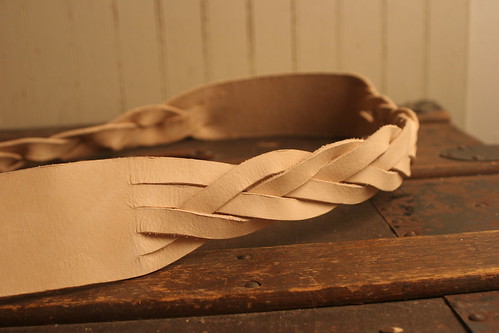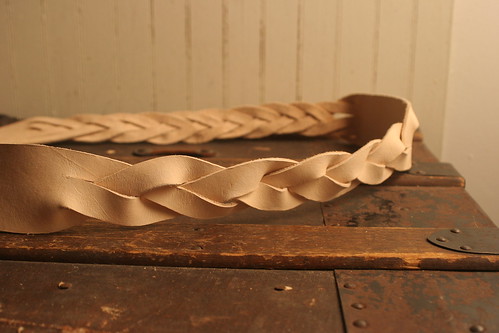Bonded sounds like a good thing – if you’re going to hire a moving company or a contractor or something of the sort. You look for the ones that are “Licensed, Bonded, Insured,” right? In this scenario it means that the company is backed by a bond company so that if they walk out on the job, or they steal your Moxie and Oliver purse, you can file a claim with the bond company (it’s similar to insurance, but covers the things that insurance doesn’t – in my understanding, it covers the criminal things that could go wrong)
So, what if you’re looking at a couch and it says “bonded leather” on it? What in the world does that mean? I have actually been looking for a few chairs for my husband’s office and recently came across one that said it was made of “bonded leather” and I – a leathercrafter by trade – had to look it up.
Bonded leather is the same thing as “recycled” or “reconstituted” leather. Rather than being made of a single piece of cow (or other animal) hide, it’s made of the little scraps of leather that are too small to use for anything else. I’ve heard the process of making bonded leather described as similar to making paper – if you’ve ever done this, it involves blending up old scraps of paper, mixing them with glue, and straining them.
With bonded leather, the leather is ground up and then mixed with polyvinyl acetate (PVA) and then rolled and stamped to look like real leather. It usually has a fabric backing to hold it together (much like the fabric backing on vinyl) but if you’re buying a piece of bonded leather furniture, you wouldn’t see this until the piece tears.
Bonded leather can actually be as little as 17% leather but since it contains leather, for a chair or a couch, the tag may actually say “leather” on it. Apparently it’s the subject of both controversy and confusion, so much so that the Federal Trade Commission has published guidelines for labeling bonded leather.
There are several purported advantages to bonded leather, but I have a hard time thinking any of them are real advantages. It’s a product made with chemicals, plastic, and minimal leather, whereas vegetable tanned leather is a meat industry co-product/by-product that uses natural substances in the tanning process. I read one site that said comparing bonded vs. real leather was like comparing ground beef vs. steak, and that’s about how I see it – instinctually, how can a bunch of pieces of leather and fabric be anywhere near as strong as a single piece of cowhide?
So, there you have it. Bonded leather (also called recycled or reconstituted) is like paper, or fiberboard, but using leather (and possibly only minimal amounts). So if you’re out at the store looking at furniture, book covers, or accessories, be sure to look carefully to see if it is genuine full-grain leather, or if it’s leather scrap. As always, I use only full-grain vegetable tanned leather – the genuine leather stuff – so you’ll always know you’re getting a top quality, 100% leather, product.
xo
c





